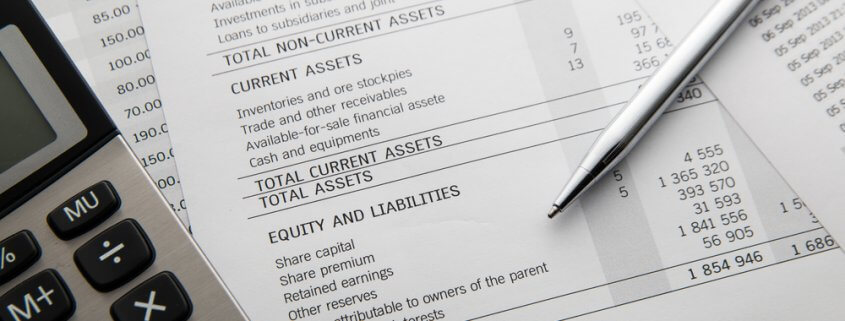How to Make a Business Balance Sheet
Last Updated May 3, 2024
There’s a reason a balance sheet is considered one of the three essential financial statements. By making a balance sheet, business owners get an inside look into how your business is performing, thus providing a guide to make more informed decisions moving forward.
Every business owner needs to know how to make a balance sheet. Therefore, continue reading to find out what exactly a balance sheet is, how to efficiently make one, and how it can help you make necessary operational adjustments.
What Is a Balance Sheet?
A balance sheet is a financial report that displays the assets of a business and its liabilities and owner’s equity. It is used to assess the financial standing of a business and principals, investors, and lenders commonly use it for financial decisions concerning the company.
A balance sheet consists of the formula: assets = liabilities + owner’s equity. Below is a breakdown of the three components of the formula and examples of each.
Assets
The assets of a company are its cash and cash equivalents. Anything that has a dollar value and can convert to cash within the scope of one year can qualify as an asset. From an accounting standpoint, assets are considered a “debit.”
You can break assets up into two categories: current assets and fixed assets.
Current assets are things such as:
- Cash and cash equivalents
- Accounts receivable
- Inventory
- Prepaid expenses
- Investments
Fixed assets may include:
- Property (land and buildings)
- Leasehold improvements
- Equipment
- Vehicles
The difference between current assets and fixed assets is in their liquidity. It is unlikely that a business owner will be able to turn their fixed assets into cash in a short timeframe.
Liabilities
Found on the other side of the balance sheet equation, liabilities are obligations that the company owes to creditors, vendors, merchants, banks, or others. These expenses are considered “credits.”
Similar to assets, liabilities are also broken up into two categories: current liabilities and long-term liabilities.
Current liabilities include:
- Notes payable
- Accounts payable
- Wages payable
- Interest payable
- Taxes payable
- Current portion of long-term debt
Long-term liabilities include:
- Long-term debt
- Lease/mortgage payable
- Loans from shareholders
The difference between current and long-term liabilities is the scope of time in which the company will be paying the liability. Current liabilities are typically considered those which you pay within one year.
Owner’s Equity
The last puzzle of the equation, also known as stockholder’s or shareholder’s equity, is the company’s book value. You are left with the net worth of the company if you take the assets (debits) and subtract the liabilities (credits).
Owner’s equity typically consists of:
- Common stock
- Retained earnings
- Additional paid-in capital
Liabilities + Owner’s Equity refers to everything you owe to outside parties, from the previously mentioned creditors, vendors, merchants, and banks to the shareholders and investors.
Step-by-Step: How to Write a Balance Sheet
Start by putting the balance sheet together. Before beginning, a business needs to determine what period of time the balance sheet will represent. The most common time period used for accounting is quarterly.
This means your balance sheet can consist of the following four quarterly periods (depending on your fiscal year):
Quarter 1 – Reporting End Date March 31st
Quarter 2 – Reporting End Date June 30th
Quarter 3 – Reporting End Date September 30th
Quarter 4 – Reporting End Date December 31st
Alternatively, a business can choose to report on an annual basis. While there are no set-in-stone dates, reporting will coincide with the end of the calendar year on December 31st.
Once you decide on the reporting period, you can begin calculating the totals of each part of the balance sheet.
Referencing the above examples, total all of the business’s assets, in order of liquidity. Make sure to provide subtotals for both current assets and fixed assets. Add all of the categories up to receive “Total Assets.” List these as shown in the balance sheet example below.
Next is the calculation for the liabilities. Like above, total the liabilities and separate the short-term liabilities from the long-term liabilities. Finally, add up the owner’s equity component and add the total liabilities to it. The below balance sheet example is a great starting place to build a balance sheet.
Balance Sheet Example
| Ex: As of December 31st, 2022 | |
| Assets | |
| Current Assets | |
| Cash and Cash Equivalents | 19,300 |
| Accounts Receivable | 163,039 |
| Inventory | 122,033 |
| Prepaid Expenses | 36,495 |
| Investments | 20,000 |
| Total Current Assets | 360,867 |
| Fixed Assets | |
| Property | 200,000 |
| Leasehold Improvements | 150,000 |
| Equipment | 70,000 |
| Vehicles | 23,000 |
| Total Fixed Assets | 443,000 |
| Total Assets | 803,867 |
| Liabilities & Owner’s Equity | |
| Current Liabilities | |
| Notes Payable | 9,423 |
| Accounts Payable | 22,104 |
| Wages Payable | 102,000 |
| Interest Payable | 12,000 |
| Taxes Payable | 29,099 |
| Current Portion of Long-Term Debt | 15,000 |
| Total Current Liabilities | 189,626 |
| Long-Term Liabilities | |
| Long-Term Debt | 300,000 |
| Lease Payable | 30,000 |
| Loans from Shareholders | 50,000 |
| Total Long-Term Liabilities | 380,000 |
| Total Liabilities | 569,626 |
| Owner’s Equity | |
| Common Stock | 100,000 |
| Retained Earnings | 134,241 |
| Total Owners Equity | 234,241 |
| Total Liabilities + Owner’s Equity | 803,867 |
What If My Assets Do Not Equal the Liabilities Plus Owner’s Equity?
If the assets on the balance sheet do not equal the total liabilities plus the owner’s equity component, there is an error somewhere in the reporting. Typical errors are miscalculations, incomplete entries, or incorrect entries. Your balance sheet must balance as per the equation mentioned previously (assets = liabilities + owner’s equity.)
What a Balance Sheet Tells You About Your Business
There are many reasons it is vital to establish a balance sheet for your business. A balance sheet allows you to see the overall standing of a business. Examining the balance sheet can show trends over multiple quarters. It is possible to understand the general direction the financial standing of the business is trending towards by comparing a current balance sheet to that of previous quarters. You can also plan ahead by creating a pro forma balance sheet.
Balance sheets are a simple way to keep track of cash, accounts receivable, accounts payable, inventory, and taxes. By displaying everything in one place, this financial instrument allows convenient access to essential line items that are crucial for the operation of your business. When analyzing inventory quarter over quarter, a business owner can ensure there is ample stock to cover a potentially growing trend in sales.
You can use multiple financial metrics to better understand a company using a balance sheet. One of the metrics business owners can determine using their balance sheet in the business’s liquidity ratio.
A liquidity ratio is a metric used to measure a company’s ability to pay off any short-term debt obligations using its current assets. This ratio is commonly examined by banks or lenders when determining if a business can qualify to take on additional liabilities.
Wrap Up
As a business grows, its balance sheet evolves, so it’s essential to stay up to date on all the metrics that ensure the financial condition of the business. While an accountant may be the one to keep track and update a company’s balance sheet, as a business owner, it is essential to understand how to read it and use it to ensure your company is performing in the most optimal manner. If you follow the information outlined above and linking your three essential financial statements together, you’ll be able to get a clearer picture of how your business’s finances look.



